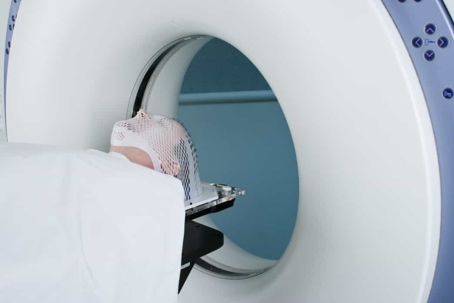
Traumatic brain injury (TBI) treatment varies based on severity and type but generally includes immediate medical care, medication, surgical interventions, rehabilitation therapies, and emerging neurotechnologies. These approaches aim to stabilize the patient, prevent further injury, and support long-term recovery and functionality.
Traumatic brain injuries can disrupt every part of a person’s life—physically, cognitively, emotionally, and socially. Understanding the full range of treatments available is essential for recovery and regaining independence.
Understanding Traumatic Brain Injuries
A TBI occurs when a sudden trauma causes damage to the brain. This can result from a blow, bump, or jolt to the head, or from penetrating injuries such as gunshots. TBIs are categorized into three levels:
- Mild (e.g., concussions)
- Moderate
- Severe
Each level requires a different treatment strategy and timeline for recovery.
Emergency and Acute Medical Treatment
1. Immediate Stabilization
In moderate to severe TBIs, immediate medical intervention is critical:
- Maintaining Oxygen Supply: Ensuring the brain receives adequate oxygen.
- Monitoring Intracranial Pressure: Excess pressure can worsen damage and lead to long-term disability or death.
- Maintaining Blood Flow: Preventing hypotension and hypoxia, which are associated with worse outcomes.
2. Surgical Interventions
Depending on the injury, emergency surgery may be needed to:
- Remove hematomas (blood clots)
- Repair skull fractures
- Relieve brain swelling or pressure (craniectomy)
Medications Used in TBI Treatment
Medication plays a key role in both short-term management and long-term symptom control:
- Diuretics: Help reduce pressure in the brain.
- Anti-seizure drugs: Prevent seizures common in the early stages post-injury.
- Coma-inducing drugs: May be used to allow the brain to rest.
- Pain relievers and antidepressants: Address lingering symptoms during recovery.
- Blood clot prevention medication: To prevent complications like strokes.
Comprehensive Rehabilitation Therapies
1. Physical Rehabilitation
Goals: Improve strength, coordination, and mobility.
- Includes gait training, balance exercises, and mobility aids like walkers.
2. Occupational Therapy
Goals: Relearn skills needed for daily life such as bathing, dressing, and cooking.
- Focuses on adaptive techniques and tools to promote independence.
3. Speech and Language Therapy
Goals: Address difficulties with communication, comprehension, and swallowing.
- Includes cognitive-communication therapy and language retraining.
4. Cognitive Rehabilitation
Goals: Restore or adapt to changes in memory, problem-solving, and attention.
- Uses exercises, tools, and strategies to improve mental processing.
5. Psychological and Behavioral Therapy
Goals: Manage emotional, behavioral, and psychological challenges post-TBI.
- May include individual or group counseling, medication for mood stabilization, and behavioral therapy.
6. Vocational Rehabilitation
Goals: Support re-entry into the workforce or finding new job opportunities.
- Includes skills training, career counseling, and workplace adaptations.
Long-Term Management and Support
Recovery from a traumatic brain injury doesn’t stop after initial treatment—it often involves years of ongoing care and adaptation.
Follow-Up Care
- Routine check-ins with neurologists and rehabilitation specialists.
- Imaging (CT or MRI scans) to track progress.
Medication Management
- Continued medication for chronic symptoms such as seizures, headaches, or depression.
Assistive Technology
- Mobility aids, communication devices, and adaptive household tools can help individuals maintain autonomy.
Family and Caregiver Support
- Education for families on how to help with recovery, provide emotional support, and prevent caregiver burnout.
Cutting-Edge and Emerging Treatments
Researchers are developing innovative therapies to further improve recovery outcomes:
1. Repetitive Transcranial Magnetic Stimulation (rTMS)
- Non-invasive magnetic therapy that stimulates targeted brain regions to improve cognition and mood.
2. Transcranial Direct Current Stimulation (tDCS)
- Uses low-level electrical currents to stimulate brain plasticity and enhance neurorehabilitation.
3. Stem Cell Therapy and Neuroregeneration
- Experimental treatments involving stem cells show potential in repairing damaged brain tissue.
4. Deep Brain Stimulation (DBS)
- Investigational use of implanted electrodes to regulate neural activity in severe TBI cases.
5. Clinical Trials
- Studies of medications like atorvastatin and minocycline are exploring their ability to reduce inflammation and protect brain function post-TBI.
Prognosis and Recovery Outlook
Recovery from a TBI is highly individualized. Factors that influence recovery include:
- The severity of the injury
- The part of the brain affected
- The speed and quality of medical intervention
- Access to ongoing rehabilitation and support
Some individuals make a full recovery, while others may live with long-term impairments. Early, aggressive treatment and long-term support greatly improve the odds of a better outcome.
Need Help Navigating a TBI Case?
If you or a loved one has suffered a traumatic brain injury due to an accident, fall, or violent incident, it’s important to seek not only medical care—but legal guidance too.
At Goldenzweig Law Group, we understand the long road that TBI survivors face. From navigating healthcare and insurance to pursuing compensation for damages, our experienced legal team is here to help you every step of the way.
Contact us today for a free consultation to discuss your case, explore your options, and ensure your rights are protected. We’re here to answer any questions and support your recovery journey—because you shouldn’t have to go through this alone.

